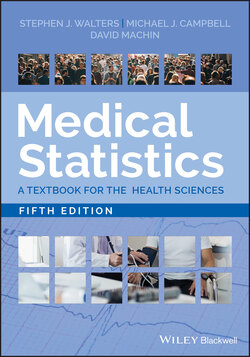Читать книгу Medical Statistics - David Machin - Страница 15
Example from the Literature – Drinking Coffee and Cancer (IARC 2018)
ОглавлениеIn 2016, a working group of 23 scientists from 10 countries met at IARC in Lyon, France, to review the research evidence of whether or not drinking coffee is carcinogenic and causes cancer. They reviewed the available data from more than 1000 observational and experimental studies. In rating the evidence, the working group gave the greatest weight to well‐conducted studies that controlled satisfactorily for important potential confounders, including tobacco and alcohol consumption. For bladder cancer, they found no consistent evidence of an association with drinking coffee, or of a dose–response relationship, that is drinking more coffee increased the incidence of cancer. In several studies, the relative risks of cancer for those drinking coffee compared to non‐drinkers were increased in men but women were either not affected or the risk decreased. IARC (2018) concluded from this that there was no evidence that drinking coffee caused bladder cancer and, as Loomis et al. (2016) stated ‘that positive associations reported in some studies could have been due to inadequate control for tobacco smoking, which can be strongly associated with heavy coffee drinking’.
In the above example tobacco and alcohol consumption are examples of confounding variables as illustrated in Figure 1.1. In this example, the individuals exposed or drinking coffee are typified by their tobacco and alcohol consumption, and these same factors are also known to influence cancer incidence rates.
Figure 1.1 Graphical representation of how confounding variables may influence both exposure (drinking coffee) and bladder cancer incidence.
Any observational study that compares populations distinguished by a particular variable (such as a comparison of coffee drinkers and non‐coffee drinkers) and ascribes the differences found in other variables (such as bladder cancer rates) to the first variable is open to the charge that the observed differences are in fact due to some other, confounding, variables. Thus, the difference in bladder cancer rates between coffee drinkers and non‐drinkers has been ascribed to genetic factors; that is, some factor that makes people want to drink coffee also makes them more susceptible bladder cancer. The difficulty with observational studies is that there is an infinite source of potential confounding variables. An investigator can measure all the variables that seem reasonable to him but a critic can always think of another, unmeasured, variable that just might explain the result. It is only in prospective randomised studies that this logical difficulty is avoided. In randomised trials, where the alternative interventions (the exposure variables) are assigned purely by a chance mechanism, it can be assumed that unmeasured confounding variables are comparable, on average, in the two groups. Unfortunately, in many circumstances it is not possible to randomise the exposure variable as part of the experimental design, as in the case of drinking coffee and bladder cancer, and so alternative interpretations are always possible. Observational studies are further discussed in Chapter 14.
